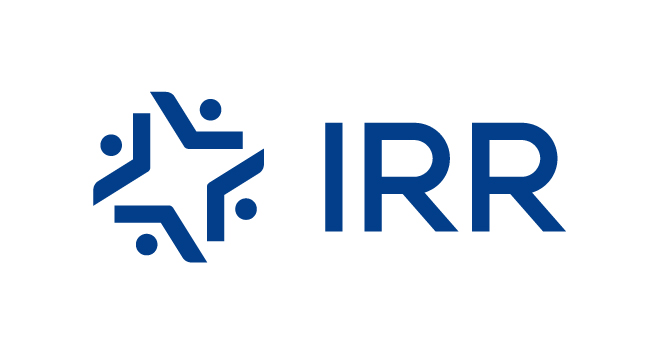Eskom’s 36% tariff hike sparks debate on power pricing and reform: Katzenellenbogen - Biznews
Eskom’s proposal to raise electricity tariffs by over 36% next year faces strong opposition from political parties and government. Energy Minister Kgosientsho Ramokgopa has labeled any hike above 20% “untenable.” South Africa must balance realistic energy pricing with the risk of economic strain. Breaking Eskom’s monopoly and introducing market competition could improve efficiency and stabilize tariffs, but political challenges and concerns over job losses complicate efforts to reform the power sector.
Jonathan Katzenellenbogen
Eskom wants to raise power tariffs by more than 36 percent next year, and follow this up with big hikes in the two following years.
There will be a massive pushback against such steep tariff increases on our streets, from political parties and the government. The electricity minister, Kgosientsho Ramokgopa, has said any tariff hike that is more than 20 percent would be “untenable.”
How he decided that a 20 percent hike would be acceptable is not clear. But this raises questions that go to the heart of how electricity should best be priced.
Across the world energy prices have surged in recent years, and South Africa has been catching up in raising tariffs. Allowing energy prices to rise to realistic levels is one of the country’s big political hurdles. This pricing issue will have to be resolved if we are not to see faster economic growth being capped by high tariffs. There is also the chance of low investment in new generation if power use is low or prices are insufficient to attract new operators.
The best way of achieving realistic prices and an efficient industry is for the Eskom supply monopoly to be broken. Privatising or concessioning off power stations and allowing them to sell power at market prices would mean the country could have a far more realistic power pricing system. That would be good for efficiency and offer realistic pricing to consumers, while giving accurate signals to investors.
Ideally, power tariffs should reflect market prices and encourage new entrants to come into the industry to meet future expected demand. Eskom does not set its tariffs, as these need to be approved by the National Energy Regulator of South Africa (NERSA). Even though it does not control price, Eskom still has a monopoly over supply, except for the small share of the total produced by households and private companies.
Although it does not control price, the protection that Eskom has under the law means there is no incentive for it to greatly increase its efficiency and seriously lower costs.
NERSA cannot fully take into account competitive prices, as there is no market in power that sets prices by supply and demand. For industry efficiency and regulation of the sector, it would be a lot more straightforward and effective if we did have a really competitive market with multiple producers.
The application by Eskom for a mammoth price increase puts the government in a dilemma. One the one hand the government would like to see an Eskom that does not require bailouts, but on the other the ANC and even their Government of National Unity partners, by association, do not want to be blamed for the high tariffs come election time.
Such a tariff increase takes the burden off the taxpayers for more state bailouts. By next year Eskom bailouts, more than half of the total for state enterprises over the past 17 years, will have reached R500 billion, about double last year’s health budget. But shifting this to consumers may hold greater political dangers.
One way of possibly reducing the problem would be by privatisation. But the ANC would not dare to privatise and lay off Eskom staff, which would mean greater competition and at least hold out the hope for a more efficient and lower-cost industry with market-related tariff levels.
In South Africa and other countries where there are state-owned power producer monopolies, there is an inherent problem in raising tariffs. As there is only one producer, there is no competitive market to guide the regulator.
NERSA, which sets tariffs after looking into Eskom’s applications, uses a formula based on the Multi-Year Price Determination method, which is essentially a cost-plus formula. It looks at Eskom’s costs for coal and diesel, operations, salaries, taxes, its cost of borrowing, the cost of having to carry the mounting payment arrears of municipalities, and taxes. Then, on top of these costs, NERSA allows Eskom a margin.
In almost every way, Eskom is bloated and uncompetitive. That is because the costs of payroll and procurement can be passed on to the Treasury or consumers, with never enough questions asked. And even when it is bailed out and given a debt rescheduling, the bloating continues.
Eskom employed slightly more than 40,000 people on the final day of its financial year ending in March 2023, way over the 14,244 that the World Bank says would be a more reasonable complement. The staff number has been going down, but certainly not with great speed. To get close to the World Bank’s suggested staff figure would mean the loss of around 26,000 jobs: around 66 percent,.
Then there are the costs of the empowerment middlemen, who buy spare parts and services from original equipment manufacturers, then add a margin and sell these to Eskom. No value added here, but just increased costs. There is also the heavy use of diesel, now reduced because the OEMs (original equipment manufacturers) have been brought into running some power stations.
Where there is competition in power supply markets, determining the scale of tariff rises for regulators to approve is a lot easier and more credible. If the country had a number of competing power producers, regulators would be able to compare the average costs of competitors and set prices that would not reward the bloated and poorly-managed, and this would prevent price gouging.
With the Eskom monopoly and the regulator using a cost-plus formula, we are stuck in a world where setting tariff prices lacks credibility. Eskom seems to apply for ever-increasing tariff rates. The regulator then allows lower tariff rises, but there is no market guide as to whether these are in fact appropriate. Power generator operators need to be allowed tariffs that are market-related, and given an incentive to lower costs and improve efficiency.
In its current form the market structure of the South African power industry is unfit for purpose, and the country is set to pay an increasingly high price for this. It is bound to take some time for the economy to adjust to a price shock of the magnitude of the tariff rises Eskom wants. The Eskom balance sheet will improve, but at the cost of a weak economy and higher inflation, while giving no incentive for the monopolist to improve.
In the early 1990s, Eskom’s prices were in the lowest ten percent of power generators across the world. The country’s competitiveness was heavily based on the low cost of power, which attracted smelters and heavy industry. We have lost that position as a result of an own goal at Eskom.
Selling off or fully concessioning off the power stations would be an important first step in moving towards a more competitive market where realistic pricing was permitted. We would not be protected from price shocks, but with competition, they might not be as severe or long-lasting.
Jonathan Katzenellenbogen is a Johannesburg-based freelance journalist
https://www.biznews.com/energy/2024/10/24/eskom-tariff-hike-katzenellenbogen
This article was first published on the Daily Friend.

